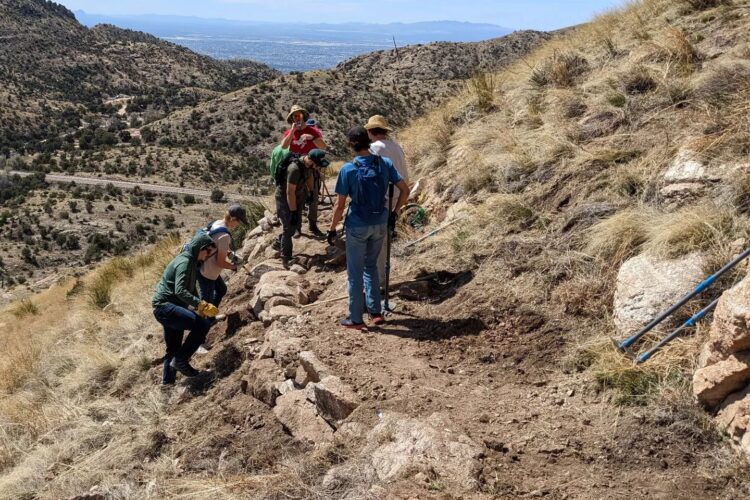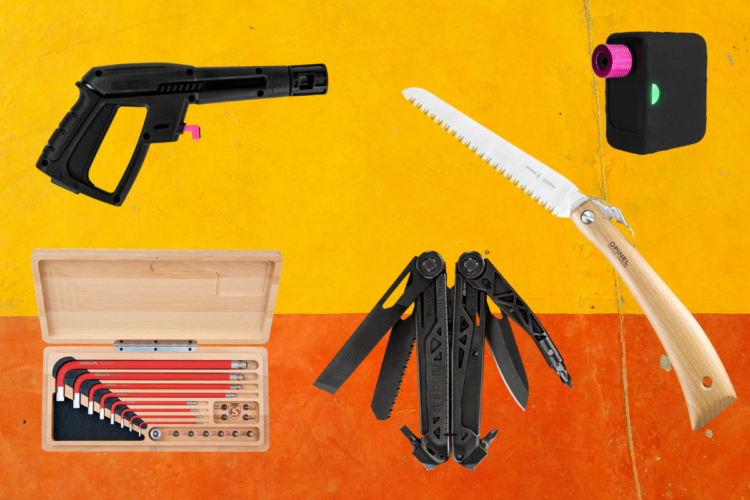
Mountain bikers around Montana and Idaho are optimistic about regaining access to a popular backcountry singletrack near Missoula, pending a decision in the coming months by the Nez Perce-Clearwater National Forest.
The National Forest is in the final steps of re-evaluating its forest management plan, which would restore mechanized access to the State Line trail, a backcountry trail that traverses and divides both the Nez Perce-Clearwater, the Lolo National Forests, and Montana and Idaho.
“Bicycle users, specifically mountain bike users, are a subset of non-motorized users that often were not planned for during past strategic planning efforts,” writes the Nez Perce-Clearwater National Forest in its draft record of decision from November 2023. “We heard from many mountain bike users and advocacy groups on the importance of being specific in the suitability of this use.”
The Nez Perce-Clearwater National Forest, sitting on the southwest Idaho side of the trail, opened a comment period to re-evaluate mountain bike access back in 2019. Riders had previously enjoyed access up until 2017 when the forest updated their travel management plan.
The Lolo National Forest, on the northeast, Montana side, allows mountain bike access on the same trail within their forest boundaries, but the Nez Perce-Clearwater has had different rules regarding bicycle access due to a recommended wilderness area designation.
In the Nez Perce-Clearwater’s new plan, the forest supervisor has been tasked with acommodating and managing the interests of a number of user groups, such as hikers, hunters, backpackers, conservationists, snowmobilers and mountain bikers. Mountain bikers would get a 150ft travel corridor along the State Line trail to make mechanized travel possible in the summer season.
In the final plan, it’s likely that no single user group will be absolutely satisfied with the decision, especially non-motorized or non-mechanized trail users who will start to see snowmobiles in the winter and mountain bikes in the summer, where both have been absent for some time.
“We’ve waited about four years to see this newest version of the plan, and we are extremely disappointed with the result,” writes Wild Montana, a conservation group. “The plan proposes managing only 108,276 acres of the 151,874 acre Great Burn roadless area as recommended wilderness, opening up over 40,000 acres to snowmobiling and mountain biking.”

Opponents of the change are worried about the potential increase of traffic on the State Line Trail and how it may increase trail user conflict.
“I know there’s been a lot of discussion on that State Line Trail about stock use,” Haley Newman, the executive director of the Great Burn Conservation Alliance told the Missoula Current. “The second that mountain-bike use gets to a certain level, that completely displaces stock users. Even though it’s an open trail, it won’t be safe. Some of that trail is really exposed, and if you’re on a horse and meet someone going at speed, it’s dangerous,” Newman said. “I’m a mountain bike rider, I like to mountain bike. But I’m also a horse rider, and some places just need to stay slow.”
Ultimately, the amount of traffic will likely be a subset of mountain bikers who are fit and technically savvy enough to ascend the rugged backcountry trails. If the State Line Trail does allow bike access on the Nez Perce-Clearwater side, it will make it possible for mountain bikers to ride a complete loop around the Heart Lake and Pearl Lake trails. Currently, it’s only rideble in a Y-shape.
Mountain bike access would also mean better connectivity and more long-distance bikepacking trails in the area.
“From the opposition’s point of view, there is a notion that we can just go ride anywhere,” said John Stegmaier, the executive director of mountain bike group MTB Missoula. “There’s tons of public land and tons of trails, but in reality it just doesn’t work like that. There’s a limited number of trails that are really good. The State Line trail is one of them, for bikepacking, for superlative views, for experience in a primitive setting. This is one.”
MTB Missoula’s involvement dates back to 2019 when Nez Perce-Clearwater started their reevaluation. Stegmaier sees instances like this as why mountain bike advocacy organizations exist.
“We just see this draft recommendation as a victory and a validation to the work around bike access advocacy. Had we not tried to drum up a critical mass, it’s unlikely there would have been consideration for bike access.”

Aside from having what Stegmaier says are limited options in the area for these backcountry experiences on mountain bikes, the opposing rules from different forests on the same trail causes a lot of confusion for riders who are planning a route.
MTB Missoula doesn’t see the proposal to change bike access as something that would change the experience of the area for other trail users. Mountain bikers’ goals for experiences tend to be aligned with hikers and equestrians who want an unobtrusive, self-powered journey into quiet and remote portions of the mountains.
“This ride is sub-alpine, dramatic, and challenging, and opportunities such as this one are increasingly rare,” wrote the previous executive director of MTB Missoula, Ben Horan in a comment letter on a draft environmental impact statement by the national forest in 2020. “In fact, portions of the State Line Trail (Tr. 738) that made this ride possible have been closed to mountain bikes in recent years. The closure of unique sub-alpine riding opportunities has been increasingly common in both Montana and Idaho.”
Mountain bikers lost access to a swath of trails in Montana in the late 2010s because of wilderness designations across the state’s national forests.
The Nez Perce-Clearwater is expected to issue their Final Record of Decision and Revised Land Management Plan and to implement and monitor the plan sometime this spring.





















1 Comments
Mar 23, 2024